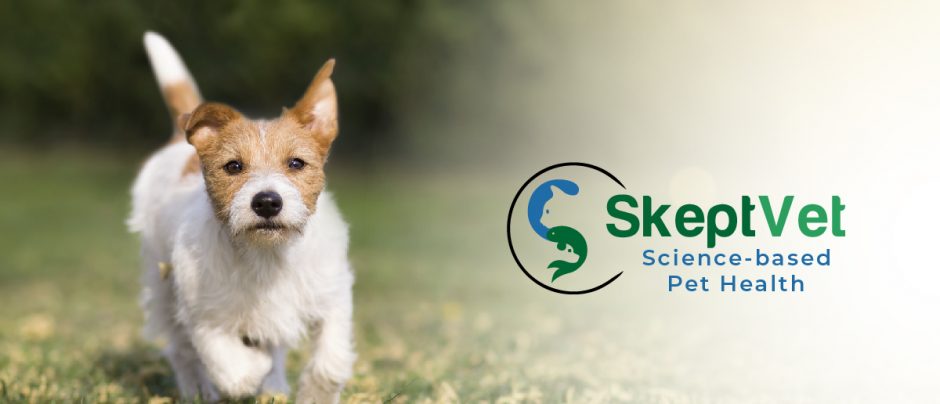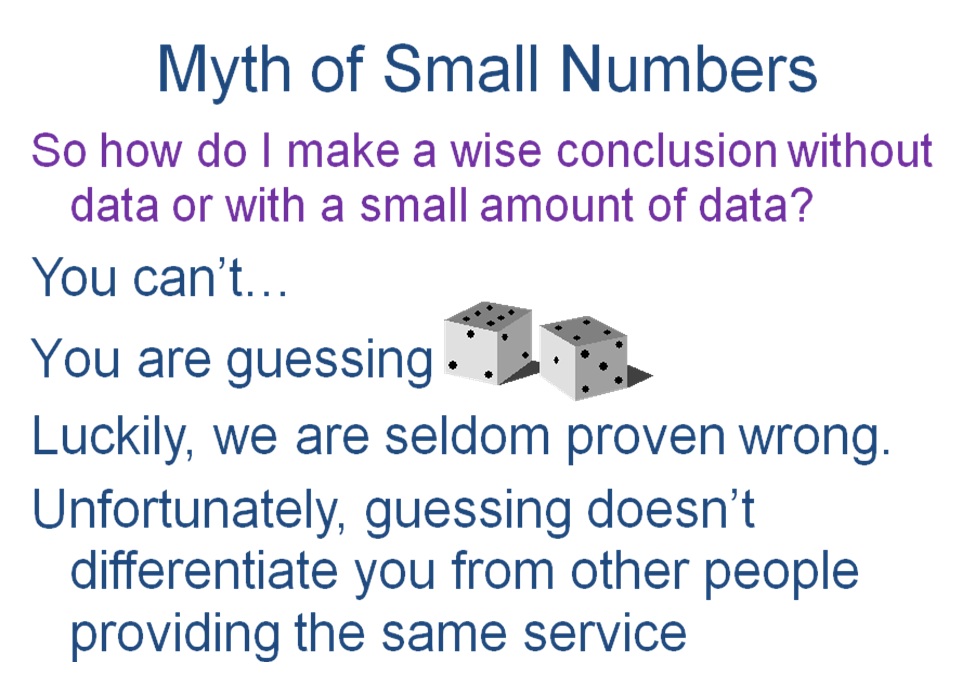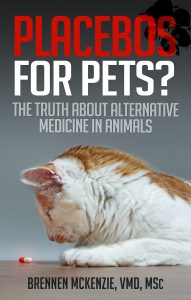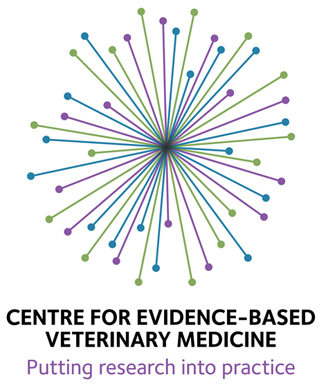In early 2010, I wrote a post listing warning signs of quack therapies, and in this post I made brief reference to Dr. Andrew Jones, who has created a successful business marketing books, DVDs, newsletters and other sources of “secret” wisdom about animal health that less enlightened veterinarians don’t want clients to know about. Then in November of last year, I reported that Dr. Jones had been repeatedly sanctioned and fined by the veterinary licensing authorities in British Colombia for unethical and illegal marketing activities. On several occasions he acknowledged these violations in writing and vowed to comply with the authorities’ guidelines, but he repeatedly violated these promises. Eventually, Dr. Jones gave up his veterinary license so that he could continue his aggressive marketing business without being restricted by the rules other veterinarians must follow.
Like many alternative medicine practitioners, Dr. Jones offers advice that ranges from routine and well-accepted principles of well-care and nutrition, which all veterinarians offer their clients despite his claims that his insights are somehow special secrets the veterinary profession wishes to suppress, to unproven assertions about benefits from untested therapies (such as herbal remedies), to outright quackery such as homeopathy.
Dr. Jones recently Googled himself and found my article, and while none of the information can possibly be a surprise to him, it apparently hit a nerve. Not surprisingly, he made no effort at all to provide a factual defense of the “secret” remedies he recommends or any justification for his behavior. Instead, he simply rehashes the irrelevant issue of anonymity, which I have addressed in detail before. Here’s his response.
It appears that Dr Skeptvet, if this person really is a veterinarian, has a strong dislike of me.
We are all entitled to our opinions, but when they become public on the internet, I feel that the author should be public.
So this is an entire blog dedicated to bashing and discrediting alternative veterinary medicine, yet the author is anonymous.
Hmmm
I could have started my Internet business anonymously, and never had to deal with all of the ‘challenges’…in fact I would likely then still be practicing.
But that goes against all I believe in…
You have always known who I am, what I do, and even where I live
I have been very transparent and truthful.
Do you have to agree with me?
No
Do you have to buy anything from me?
No
But do I at least have ‘the balls’ to put myself out there?
Yes
Best Wishes,
Dr Andrew Jones, DVM
P.S. Ultimately it comes down to results..not what is said on the internet, but whether or not some of what I discuss actually helps dogs and cats.
My book, Veterinary Secrets Revealed literally has over 1000 testimonials from ‘real’ dog and cat owners.
So what does this boil down to?
1. Since he cannot begin to imagine why I, the British Columbia Veterinary Medical Association (BCVMA) for that matter, would disagree with what he does, the only motive must be personal dislike for him.
2. He is a brave man for publically selling unproven or even clearly bogus therapies under his own name, and internet anonymity is far worse than selling therapies that don’t work or branding the rest of the veterinary profession as greedy tools of Big Pharma who want to deny their patients access to his treatments.
3. He can provide testimonials that claim his treatments work, so they must actually work and science is irrelevant.
Despite the fact that facts are of no interest to Dr. Jones, including the fact that he has been repeatedly judged guilty of violating the law and of reneging on promises to abide by the rules governing veterinary licensure in his country, he is still required to put his personal version of the Quack Miranda Warning.
DISCLAIMER: This information is for educational
purposes only and is not intended to replace the
advice of your own veterinarian. Dr Andrew Jones
resigned from the College of Veterinarians of
B.C. effective December 1 2010, meaning he
cannot answer specific questions about your
pet’s medical issues or make specific medical
recommendations for your pet.
There is no question that Dr. Jones has a loyal following, which resembles a personality cult in its expressions of blind loyalty and vicious condemnation of anyone with the temerity to doubt their leader. Here are some of the comments made on Dr. Jones’ site and here by his defenders.
I’m not thrilled about vets but I trust you implicitly. You are definitely a doctor of good practices, no matter if you have a license or not.
You run into “JERKS” every where you go.
Seems to me you ran into one more in your life to add to your list.
This idiot must not have much to do, or the jam to say who he is.
That makes him a weak minded, useless piece of dog poop!As a life long animal lover I have met many vets and only trusted 3 of them. I have never met you, but I would have loved to have you as my pets Doctor!
What a spineless excuse for a human being. This person thinks people will believe these lies about you.
I’m am truly sorry for the outright lying that is being put on the internet.
I for one believe in who you are as a person and secondly how you treat animals is nothing but exceptional. It’s too bad your home doesn’t give you the respect you deserve and have earned.every individual that challenged the establishment through history has been ousted by the establishment…Dr Merkola is in the same boat, as well as Dr Weil, and so many others( for humans)… As you know, the attacks come out of fear and ignorance- nothing more..
This sceptivet sounds suspiciously like another site run by an individual calling themselves ‘scepticat’ or ‘sceptikat’- a highly volatile dictatorial site run by a wannabe megalomaniac. A truly disturbed person with a anger management issue venting via their little site to their own personal herd of sycophants. I would dismiss them like a fly on your arm. Just troubled souls with no purpose.
Just another stooge for corporate interests such as big pharma
I cannot believe what this idiot has put up on the internet and I would do my best to shut him down.
I really find your blog quite upsetting…Why you have to be so anti is very unfair, and abhorrent. More like large companies likely to lose revenue pulling strings on the veterinary regulatory body .. There is no profit in healthy animals…
Jehovah created all of the real foods & spices for treating specific diseases. It is admirable that some vets as well as medical doctors are returning to the idea that real foods & spices are an alternative to the poisons that big pharmaceuticals invented to increase their profits and destroy their customers.
You are a lying scumbag…… eat dog shit and die !!!! you evil money monger !!!!
These comments all share the usual characteristics of blind faith in alternative therapies and distrust of scientific medicine.
1. Personal loyalty to individual authority figures and personal attacks on critics, with no reference to facts, evidence, or any substantive argument about ideas.
2. A refusal to even consider any criticism or contradictory evidence as valid in any way.
3. A reflexive and automatic assumption that any criticism must be motivated by personal antipathy, greed, fear, psychological disturbance, or anything other than a reasoned, thoughtful consideration of the evidence leading to a conclusion that their ideas are wrong.
4. Dismissal of the entirety of scientific medicine and all its accomplishments as meaningless fictions generated by the evil pharmaceutical industry or some other bogeyman.
There isn’t much use in responding to such vacuous and personal attacks since there is no indication that any of these folks have any interest in reasoned arguments or scientific evidence. How exactly I could be “lying” when all I did was repeat the coclusions of the BCVMA reports (many of which Dr. Jones acknowledged as truthful in writing) is a bit of a mystery. As far as the issue of anonymity, the mindless personal comments of Dr. Jones and his followers do more than I could to explain why one might blog under a pseudonym, but I’ll just repeat what I’ve said before on the subject in the FAQ for this blog:
Who are you and why don’t you blog under your real name?
It doesn’t matter who I am. My ideas and arguments should be judged on their own strengths and weaknesses, not on the basis of whatever prejudices you may have about me as a person. Am I more likely to be right if I am a woman or a man? Does my analysis of scientific research suddenly become more or less accurate if you discover where I went to school, where I practice, or what color I am? These are irrelevant facts that people use to distract from the points I make rather than deal with them directly. I choose to blog under a pseudonym primarily so that the focus remains on the issues, ideas, and facts under discussion, not on irrelevant personal details about me.
I also choose to blog as the SkeptVet because it makes it a little easier to write about individual patients and questions that my clients ask me while still protecting their privacy. This blog grew out of my efforts to become better informed about alternative medicine and to respond thoughtfully and accurately to my clients’ questions. My clients certainly know my views on the subjects I discuss here because these discussions are simply a part of my ongoing effort to provide my clients, and the public in general, with scientific, evidence-based information. I often refer existing and potential clients to my website, so there is no question of my hiding this information from them.
I have no particular desire for attention or notoriety, but I am certainly willing to take responsibility for the statements I make here. While it is (barely) possible to blog completely anonymously, it requires a great deal of effort, and I have not made that effort (though given the amount of angry, even hysterical hate mail I get, I sometimes wish I had). It is relatively easy to discover my identity. But before you try, ask yourself if it is really relevant to the merits of my argument, or if it is just going to make it easier to dismiss what I say by applying your pre-existing biases and prejudices to me.
As for other accusations, I will repeat that unlike Dr. Jones my Internet presence is entirely non-commercial. I write these articles in my free time to provide a counterweight to the almost universally commercial sources of information on the Internet so that pet owners can have all the facts and arguments to consider when making decisions. I make no money from these efforts, and I lose no money to Dr. Jones or anyone else because they choose to sell therapies that I choose not to employ because they lack convincing evidence of safety and/or efficacy. Despite the vacuous personal abuse I receive as a result, I feel people have a right to an independent source of information and criticism of unproven or quack methods.
The timing of this outburst is particularly interesting, coinciding as it does with the recent attempts by the Burzynski Cancer Clinic to threaten and intimidate critics and to respond to criticism with empty vituperation rather than logic and facts. Such responses resemble the reaction of religious fundamentalists to criticism of their beliefs, which only highlights the ultimately faith-based nature of much belief in alternative medicine, which is impervious to any rational argument or discussion. Fortunately, most pet owners, and even many proponents of alternative veterinary medicine, are far more reasonable and open to substantive debate than these folks appear to be, and so these alternative methods will still have to prove themselves to the majority on the basis of real scientific evidence, not just the passionate faith of their adherents.











